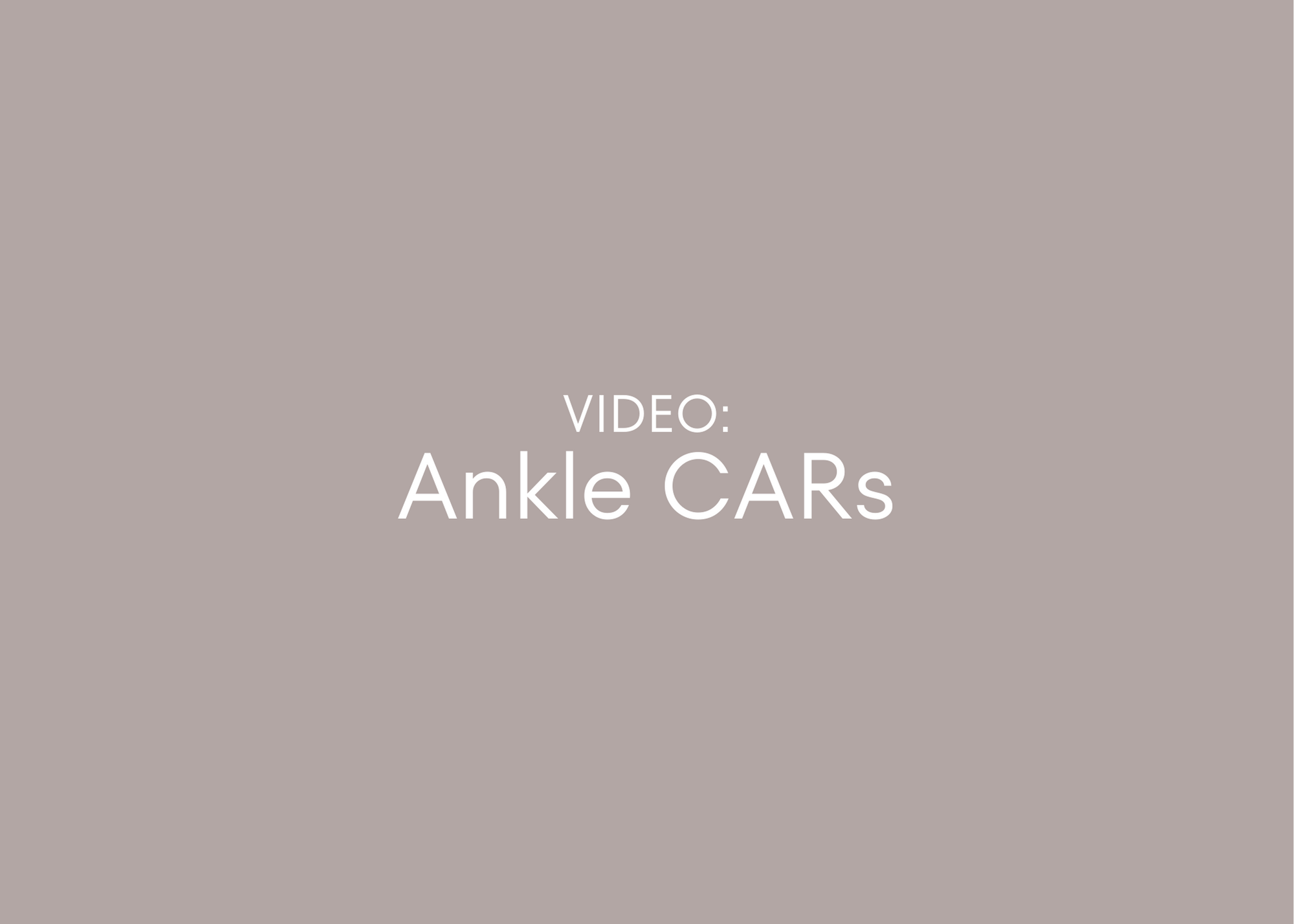Controlled Articular Rotations
Controlled Articular Rotations: Improving Joint Stability Through Proprioception
If the video above is not displaying, click here.
What is proprioception, and why do we need it?
Proprioception is our ability to sense where our bodies are within the space around us. It allows us to have a positional sense of all of our joints and limbs without looking directly at them (press the gas vs the brakes in the car while looking at the road). This is an essential function for all of the movements that we perform regularly without even thinking about it. If we didn’t have proprioception.
How does proprioception work?
Proprioception isn’t like our major external senses where there is one sensory organ that controls each sense, such as our eyes for vision. In contrast, we have sensors for proprioception throughout our entire bodies!
They are in our muscles (muscle spindles), in our tendons (Golgi organ) and in our joints (joint capsule mechanoreceptors). All of the information from these sensors travel up to the cerebellum, brainstem, and the brain where the sensory information is translated into a fine tuned movement.
What happens when proprioception doesn’t work?
Proprioception can be impaired by something traumatic such as a brain injury, which can impair our brain’s ability to process position sense information, or it can happen from more minor injuries. For example, ankle proprioception is decreased after an ankle sprain which means that you are more likely to sprain it again because with less position sense, you have less precise motor control. Osteoarthritis is another common disorder that impacts proprioception. This is particularly impactful given that aging is already associated with decreased proprioception, and paired with decreased proprioception from OA, the risk of fall injuries increases.
How do we improve proprioception?
Proprioception is incredibly important in preventing injuries, so what can we do to improve our proprioception?
The best way is to augment the sensory information coming from the area (joint, muscle, ligament etc.) that is going to the brain.
This can be accomplished through manual therapy, soft tissue techniques, taping, and/or bracing. All of these modalities stimulate the mechanoreceptors and send a ton of sensory information to the brain. In the case of manual therapy, there can also be lasting improvements in sensory integration in the brain. Manual therapy includes exercises that re-teach the body what moving a joint or limb feels like.
What is a Controlled Articular Rotation?
Controlled Articular Rotations (CARs) refer to exercises where you trigger all the sensory receptors in a certain area (such as the muscle spindles, Golgi organs, or the mechanoreceptors in the joint capsule) by moving through the full range of motion of the related joint. This is different from just doing ankle circles, for example. The difference is that with CARs, you are engaging all of the muscles surrounding a joint to pull it into as much range of motion as possible. This ensures that you are teaching the brain to understand the full range of motion of that joint.
On the exercises page of my website, you can find demonstrations of how to do CARs for multiple joints.
If you’re interested in more advanced therapy and exercise to improve your proprioception, send me an email and we can chat!
References:
1, Riemann, B. L., & Lephart, S. M. (2002). The Sensorimotor System, Part II: The Role of Proprioception in Motor Control and Functional Joint Stability. Journal of athletic training, 37(1), 80–84. https://www.ncbi.nlm.nih.gov/pmc/articles/PMC164312/
2. Pai, Y., Zymer, W, Chang, R., Shaw, L (2005). Effect of age and osteoarthritis on knee proprioception. Arthritis and Rheymatism, 40(2), 2260-2265. https://onlinelibrary.wiley.com/doi/abs/10.1002/art.1780401223
3. Röijezon, U., Clark, N. C., & Treleaven, J. (2015). Proprioception in musculoskeletal rehabilitation. Part 1: Basic science and principles of assessment and clinical interventions. Manual Therapy, 20(3), 368–377. doi:10.1016/j.math.2015.01.008


